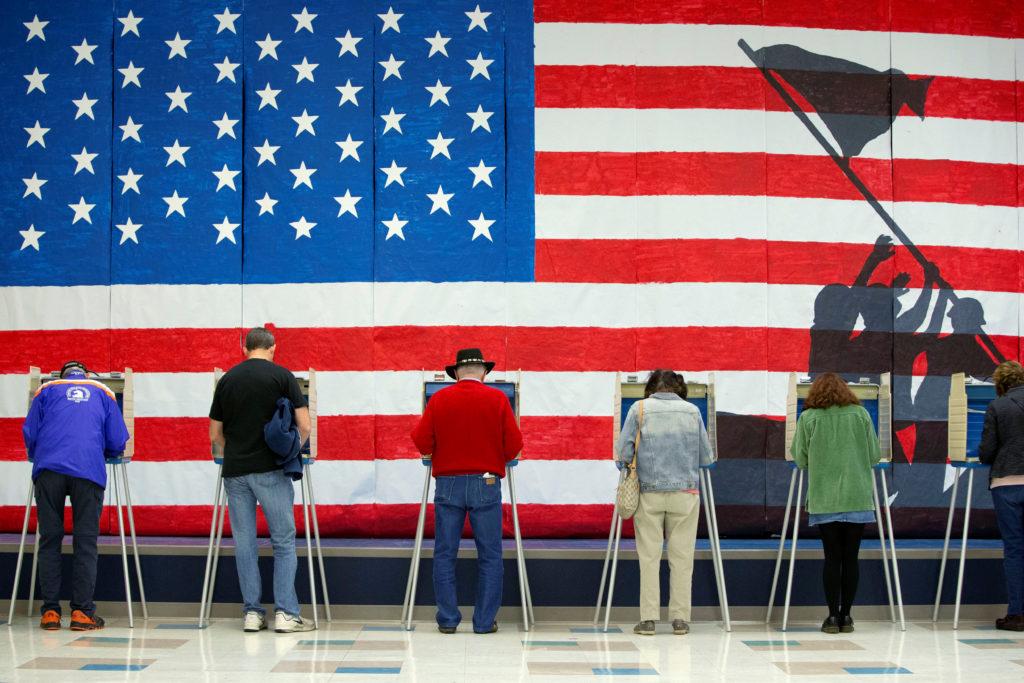In the ever-evolving landscape of American politics, a palpable discontent is stirring among the ranks of Democratic voters. Once united by a shared vision of progress, many are beginning to voice frustrations over the actions—and inactions—of their party leaders. As the aspirations of grassroots activists clash with the pragmatism of established politicians, a rift is forming that raises critical questions about the future direction of the Democratic Party. In this article, we delve into the perspectives of these increasingly disillusioned voters, exploring the reasons behind their growing dissatisfaction and examining what it might mean for the party’s identity and electoral prospects in the years to come. Join us as we listen to the voices calling for change from within—an essential dialogue that echoes through the corridors of power and reverberates across the nation.
Voices of Discontent: Understanding the Frustrations of Democratic Voters
Across the nation, a growing chorus of Democratic voters is expressing their dissatisfaction with the very leaders they once rallied behind. These individuals feel that the party has strayed from its core principles, becoming disconnected from the everyday struggles faced by ordinary citizens. Their frustrations reflect a variety of concerns:
- Inaction on Key Issues: Many voters are upset with what they see as a lack of urgency to address significant matters like climate change, healthcare accessibility, and economic equality.
- Failure to Unite: There’s a feeling that the party has become fragmented, with internal divisions overshadowing collaborative efforts to advance shared goals.
- Disconnect with Voter Needs: Some voters feel that their voices and concerns are not being adequately listened to, resulting in policies that do not resonate with their realities.
To illustrate these sentiments, here’s a quick overview of what some Democratic voters are prioritizing:
| Concern | Voter Sentiment |
|---|---|
| Climate Change | Urgent action needed. |
| Healthcare | More accessible and affordable options. |
| Economic Inequality | Stronger support for low-income families. |
This climate of discontent is shaping the political landscape as voters demand accountability and a true reflection of their values from Democratic leaders. As these voices grow louder, the hope for a more inclusive and responsive party may hinge on the willingness of leaders to engage with their constituents and embrace much-needed change.
Beyond the Ballot: The Disconnect Between Party Leaders and Grassroots Support
As the political landscape evolves, a growing number of Democratic voters are expressing their discontent with the direction taken by party leaders. This disillusionment stems from a perceived disconnect between the priorities of those in power and the grassroots supporters who form the backbone of the party. Many feel that their voices are being overshadowed by establishment decisions, leading to a sense of alienation and frustration.
Key issues fueling this discontent include:
- Policy Priorities: Voters are increasingly frustrated with a lack of focus on critical issues such as climate change, healthcare, and income inequality.
- Lack of Representation: Many believe that leadership does not reflect the diversity of the party’s base, particularly in regards to socioeconomic and racial representation.
- Decision-Making Transparency: The feeling that decisions are made behind closed doors has left many supporters questioning whether their opinions truly matter.
This growing rift can also be illustrated by the following table, showcasing voter concerns and how they compare to party leadership actions:
| Voter Concerns | Party Leadership Action |
|---|---|
| Climate initiatives | Slow progress on ambitious legislation |
| Healthcare reform | Focus on moderate solutions |
| Economic inequality | Minimal action on wealth redistribution |
This disconnect has prompted many to question whether the Democratic Party can bridge the gap between its leadership and grassroots supporters. As the 2024 election approaches, addressing these concerns will be crucial for rebuilding trust, mobilizing voters, and fostering a more inclusive political environment.
Seeking Solutions: Strategies for Rebuilding Trust Within the Democratic Party
In a political climate characterized by division and discontent, rebuilding trust within the Democratic Party requires innovative approaches that foster engagement and transparency. Party leaders must prioritize the voices of grassroots supporters, encouraging open dialogues that bridge the gap between the establishment and everyday voters. Key strategies include:
- Regular Town Halls: Hosting candid discussions where voters can question leaders, share concerns, and propose ideas.
- Empowering Local Leaders: Investing in grassroots leaders who reflect the community’s diversity and can amplify constituent issues.
- Transparency Measures: Implementing clear communication about party decisions and policies to demystify the political process.
Another essential aspect of rebuilding trust is accountability. The party must actively demonstrate that it listens to and acts upon voter feedback. This can be achieved through:
| Action Item | Impact |
|---|---|
| Regular Surveys | Gauge voter sentiment and adjust strategies accordingly. |
| Inclusive Campaigns | Ensure that underrepresented groups feel heard and valued. |
| Open Feedback Loops | Encourage continuous dialogue between voters and leaders. |
Lastly, it is crucial to cultivate a culture of unity and shared purpose within the party. This involves not only promoting policies that resonate with a broad base but also engaging in collaborative initiatives that highlight common values. By focusing on the following:
- Coalition Building: Form alliances with diverse groups to enhance the party’s reach and appeal.
- Shared Goals: Establishing a collective vision that aligns with the aspirations of all party members.
- Celebrating Successes: Recognizing and amplifying successes that stem from collective efforts, fostering a sense of pride and ownership.
A Call for Change: Empowering Voters to Influence Party Direction
As the political landscape shifts dramatically, a growing number of Democratic voters are expressing their frustration with the direction set by party leaders. This discontentment has sparked a fervent call for change, urging those within the party to align more closely with the values and concerns of the grassroots. Many are gathering to discuss strategies aimed at reclaiming their influence and reshaping the narrative.
Voters across the nation echo similar sentiments, articulating their desires for a party that prioritizes:
- Transparency in decision-making processes.
- Inclusive policies that reflect the diverse voices within the community.
- Accountability for failures or perceived neglect in past strategies.
- Engagement that goes beyond elections, fostering continuous dialogue.
Additionally, grassroots movements are becoming more organized, focused on ensuring that their voices are not just heard but also acted upon. Grassroots organizers are encouraging voter participation through:
| Action Steps | Description |
|---|---|
| Town Hall Meetings | Opportunities for direct engagement with elected officials. |
| Petition Drives | Collecting signatures to demonstrate support for critical issues. |
| Awareness Campaigns | Raising visibility about key topics affecting communities. |
The call for change is clear: voters want a Democratic Party that is responsive to their needs and empowers them to help steer its future. This movement signals not just a demand for accountability, but also a sense of hope that collective action can reshape party dynamics and principles.
Insights and Conclusions
As we draw the curtain on this exploration of Democratic voters’ sentiments, it’s clear that the landscape within the party is evolving. The voices of discontent highlight a pivotal moment in American politics, where loyalty to party leaders is being challenged by the urgent call for accountability and representation. These voters, once steadfast in their allegiance, are now demanding more than just rhetoric; they seek action that resonates with their values and aspirations. As the 2024 elections approach, the challenge for the Democratic Party will be to listen and adapt to the shifting tides of their base. The dialogue among voters may well shape the future of the party, fostering a renewed commitment to the ideals that once unified them. In a time of unprecedented change, one question remains: will party leaders heed the call of their constituents, or will they risk losing their foundation? The answers will unfold in the coming months, as the hearts and minds of voters take center stage in this ongoing political narrative.
